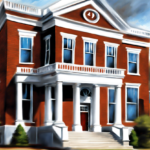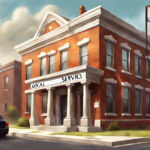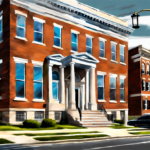The Benefits of Hiring a Graphic Designer
Graphic design plays a crucial role in today’s business landscape. From websites and social media posts to brochures and logos, visual communication is essential for creating a strong brand identity and attracting the intended audience. While some business owners attempt to design their own graphics, hiring a professional graphic designer brings a multitude of benefits that can elevate your brand to the next level.
1. Professionalism and Expertise
A graphic designer possesses the necessary skills and expertise to create visually appealing designs that effectively convey your brand message. They are trained in design principles, color theory, typography, and composition, ensuring that every element of the design is cohesive and visually appealing. By hiring a professional, you are guaranteed a polished and professional-looking design that stands out from the competition.
2. Time and Cost Savings
Designing graphics in-house can be time-consuming, especially if you or your employees do not have the necessary design skills. By outsourcing your design needs to a graphic designer, you can free up valuable time to focus on other important aspects of your business. Additionally, hiring a designer on a project basis can be more cost-effective than hiring a full-time employee, especially for small businesses with limited budgets.
3. Consistency in Branding
A skilled graphic designer understands the importance of consistent branding across all platforms. They will create a brand style guide that outlines the correct logo usage, color palette, typography, and other design elements. This ensures that all of your marketing materials maintain a cohesive and recognizable brand identity, helping to build trust and credibility with your audience.
4. Creativity and Innovation
A graphic designer brings a fresh perspective and creative thinking to your design projects. They have a deep understanding of current design trends and can incorporate innovative ideas into your brand materials. By leveraging their creativity, you can create designs that capture attention, engage your target audience, and set your brand apart from competitors.
5. Access to Professional Tools and Resources
Graphic designers have access to industry-standard design software and a wide range of resources that can enhance the quality of your designs. They are familiar with the latest design techniques and can leverage these tools to create visually impactful and professional designs. By hiring a graphic designer, you gain access to their expertise and the tools necessary to create outstanding visual content.
Hiring a graphic designer offers numerous benefits for businesses of all sizes. From professionalism and expertise to time and cost savings, a graphic designer plays a crucial role in visually communicating your brand message and establishing a strong brand presence. By investing in professional design, you can elevate your brand and attract your target audience with visually appealing and impactful graphics.
Essential Skills to Look for When Hiring a Graphic Designer
Graphic design plays a crucial role in creating visually appealing and impactful content. Whether you are a business owner looking to revamp your brand identity or an individual in need of a design project, hiring a skilled graphic designer is essential. However, finding the right candidate can be daunting. To ensure you make the best hiring decision, it is important to look for certain essential skills in a graphic designer.
1. Creativity: A creative mindset is at the core of graphic design. Look for a designer who can think outside the box, bring fresh ideas to the table, and create unique visual concepts. This skill will help them in delivering designs that stand out and effectively communicate your message.
2. Technical Proficiency: Graphic design involves working with various software and tools such as Adobe Photoshop, Illustrator, and InDesign. Ensure that the designer you hire is proficient in these programs and has a strong understanding of design principles, typography, and color theory. A good designer will have a solid foundation in technical skills and the ability to execute their ideas seamlessly.
3. Strong Communication Skills: Effective communication is crucial when working with a graphic designer. Look for someone who has excellent communication skills, both verbal and written. They should be able to understand your requirements, ask relevant questions, and articulate their ideas clearly. This will facilitate a smooth collaboration and ensure that your vision is accurately translated into visual designs.
4. Attention to Detail: Graphic design requires meticulous attention to detail. Look for a designer who has an eye for detail and is able to spot even the smallest inconsistencies or errors. This will ensure that the final designs are polished and professional.
5. Portfolio and Experience: When evaluating potential candidates, review their portfolio to get a sense of their style, aesthetics, and range of work. Look for designers who have experience working on projects similar to yours, as this will demonstrate their ability to deliver results in your specific industry or niche.
6. Time Management Skills: Timeliness is essential in the fast-paced world of graphic design. Choose a designer who has good time management skills and is able to meet deadlines consistently. This will prevent delays in your projects and ensure a smooth workflow.
7. Adaptability and Openness to Feedback: Graphic design often involves revisions and tweaks based on client feedback. A good designer should be adaptable and open to feedback, willing to make changes to meet your expectations. Look for someone who is receptive to constructive criticism and takes feedback as an opportunity to improve.
When hiring a graphic designer, it is important to look beyond technical skills and consider these essential traits. Finding a designer who possesses creativity, technical proficiency, strong communication skills, attention to detail, a well-rounded portfolio, time management skills, and adaptability will set the stage for a successful collaboration.
How to Find the Right Graphic Designer for Your Project
Finding the right graphic designer for your project is crucial to ensure that your visual communication needs are met with professionalism and creativity. Whether you are looking to create a new logo, design a website, or develop a marketing campaign, hiring a skilled and experienced graphic designer will greatly contribute to the success of your project. Here are some steps to help you find the perfect graphic designer:
-
Define your project requirements: Before starting your search, clearly define what you need from a graphic designer. Identify the specific skills, experience, and style that would be most suitable for your project. This will help you narrow down your options and ensure that you find a designer who aligns with your vision.
-
Research and gather portfolios: Take the time to research and gather portfolios of different graphic designers. Visit their websites, social media profiles, or professional platforms like Behance or Dribbble. Look for designers whose work resonates with your aesthetic preferences and demonstrates proficiency in the type of work you require.
-
Ask for recommendations: Reach out to your network and ask for recommendations. Seek referrals from colleagues, friends, or business partners who have previously worked with graphic designers. Personal recommendations can often provide valuable insights and help you find reliable and trustworthy professionals.
-
Conduct interviews: Once you have shortlisted a few candidates, schedule interviews to assess their suitability. Prepare a list of questions to ask during the interview, focusing on their experience, process, and how well they understand your specific project requirements. Gauge their communication skills, attention to detail, and ability to meet deadlines.
-
Review their past work: During the interview process, take the time to review the graphic designer’s past work. Pay attention to the quality and consistency of their designs, their ability to adapt to different styles and industries, and their attention to detail. Ask for references and contact previous clients to get feedback on their experience working with the designer.
-
Consider your budget: While it’s essential to find a graphic designer who meets your needs, it’s also important to consider your budget. Discuss pricing and payment terms with the candidates before making a final decision. Remember that quality comes at a cost, and investing in a skilled graphic designer can yield long-term benefits for your brand or business.
-
Sign a contract: Once you have identified the right graphic designer for your project, it’s important to formalize the agreement with a contract. Clearly define the scope of work, deadlines, revisions, payment terms, and any other relevant details to avoid any misunderstandings or disputes.
Finding the right graphic designer may require some time and effort, but it’s well worth the investment. By following these steps and carefully evaluating your options, you can hire a graphic designer who will bring your vision to life and deliver exceptional results for your project.
For more information on hiring a graphic designer, you can visit www.website.com.
Questions to Ask When Interviewing a Graphic Designer
When it comes to hiring a graphic designer, asking the right questions during the interview process is crucial to ensure you find the right fit for your project. The interview allows you to gauge the expertise, experience, and compatibility of the potential candidates. By asking the following questions, you can gain valuable insight into a graphic designer’s skillset and determine if they align with your project requirements:
1. Can you describe your design process?
Understanding a graphic designer’s design process is important as it gives you insight into how they approach projects and their level of organization. A well-structured design process ensures that the designer can effectively manage tasks, meet deadlines, and deliver high-quality work. Look for candidates who can clearly articulate their process and demonstrate an ability to adapt it to suit your needs.
2. What is your experience with similar projects?
It’s important to hire a graphic designer who has experience working on projects similar to yours. Ask candidates about their previous work in your industry or with similar design requirements. This will give you an idea of their design capabilities and whether they can bring fresh ideas to the table.
3. How do you approach client feedback and revisions?
Client feedback and revisions are an integral part of the design process. A good graphic designer should be receptive to feedback and open to making revisions based on client input. Ask candidates how they handle feedback and how they ensure client satisfaction. Look for designers who are collaborative, communicative, and willing to make necessary changes to achieve your vision.
4. What software and tools do you use?
Graphic design involves the use of various software and tools. It’s essential to ensure that the graphic designer you hire is proficient in the necessary programs for your project. Ask candidates about the software they are comfortable with and how they stay updated on the latest design tools and trends. Look for designers who have expertise in the specific software you require.
5. Can you provide a portfolio of your work?
A portfolio is a visual representation of a graphic designer’s skills and creativity. Ask candidates to provide a portfolio that showcases their best work. Evaluate their portfolio to see if their design style aligns with your project’s aesthetic and objectives. Pay attention to the quality, variety, and relevance of their previous work.
Asking these questions during the interview process will help you make an informed decision when hiring a graphic designer. Remember to consider factors like communication skills, professionalism, and cultural fit in addition to technical expertise. By finding the right graphic designer, you can ensure the success of your project and achieve your desired design outcomes.
Tips for Effective Communication with Your Graphic Designer
When working on a design project, effective communication with your graphic designer is crucial to ensuring a successful outcome. Good communication allows you to convey your ideas and expectations clearly, ultimately resulting in a design that aligns with your vision. Here are some tips to facilitate effective communication with your graphic designer:
1. Clearly Define Your Project Goals
Before you start working with a graphic designer, it’s important to have a clear understanding of your project goals. What message do you want to convey through the design? Who is your target audience? Having clear goals will help your designer better understand your vision and create designs that are tailored to your specific needs.
2. Provide Detailed Briefs
When briefing your graphic designer, be as specific as possible. Clearly outline your requirements, including the project scope, target audience, preferred design style, and any specific elements or features you want to incorporate. The more details you provide, the better equipped your designer will be to bring your ideas to life.
3. Share Visual References
Visual references can be extremely helpful in conveying your preferences and vision to your graphic designer. Find examples of designs or styles that you like and share them with your designer. This will give them a better understanding of your taste and help them create designs that align with your aesthetic preferences.
4. Communicate Feedback Constructively
Throughout the design process, it’s important to provide timely and constructive feedback to your graphic designer. If you have any concerns or suggestions, communicate them clearly and respectfully. Remember that your designer is there to collaborate with you and bring your vision to life, so open and honest communication is essential for achieving the desired results.
5. Be Open to Collaboration
A collaborative approach is often the most effective way to work with a graphic designer. Be open to their ideas and expertise, as they may have valuable insights that can enhance your design. By fostering a collaborative environment, you can harness the full potential of your designer’s skills and creativity.
6. Set Realistic Deadlines
When discussing timelines with your graphic designer, ensure that you set realistic deadlines for each stage of the design process. This will help both you and your designer manage your expectations and ensure that the project stays on track. It’s important to allow your designer sufficient time to create high-quality designs without rushing the process.
Effective communication with your graphic designer is key to achieving your desired design outcomes. By clearly defining your project goals, providing detailed briefs, sharing visual references, communicating feedback constructively, being open to collaboration, and setting realistic deadlines, you can establish a strong working relationship and create designs that meet your expectations.
Conclusion
To conclude, hiring a graphic designer can be immensely beneficial for your business or project. Their expertise, creativity, and technical skills can help enhance your brand image, attract customers, and convey your message effectively. By understanding the benefits of hiring a graphic designer, you can make a more informed decision and ensure that you find the right professional for your needs.
When it comes to hiring a graphic designer, there are several essential skills that you should look for. These include proficiency in design software, a strong portfolio showcasing their creativity and versatility, a keen eye for detail, and the ability to understand and interpret your design briefs accurately. Additionally, good communication skills, time management, and the ability to work well under pressure are also crucial traits to consider.
Finding the right graphic designer for your project requires careful consideration and research. You can start by asking for recommendations from peers, browsing through online portfolios, and checking out reviews and testimonials. It’s important to assess their style and previous work to ensure that it aligns with your vision and objectives. Furthermore, reviewing their qualifications, certifications, and experience can provide insight into their expertise and professionalism.
During the interview process, asking the right questions can help you gauge a graphic designer’s skills, experience, and fit for your project. Inquire about their design process, how they handle deadlines and revisions, and whether they have experience working on similar projects. Requesting references or contacting previous clients can also give you valuable insights into their work ethic, reliability, and ability to meet expectations.
Effective communication is paramount in ensuring a successful collaboration with your graphic designer. Clearly articulate your objectives, ideas, and expectations from the beginning. Provide comprehensive design briefs and be open to their professional recommendations. Regularly communicate throughout the process, providing constructive feedback and clarifying any questions or concerns that may arise.
Hiring a graphic designer requires careful consideration, but the benefits they bring to your project are invaluable. From their creative skills to their ability to understand your vision and communicate it effectively, graphic designers play a vital role in shaping your brand image. By identifying the essential skills, conducting thorough research, asking pertinent questions during the interview process, and maintaining open and effective communication, you can ensure a successful partnership with your graphic designer and achieve the desired results for your project.



